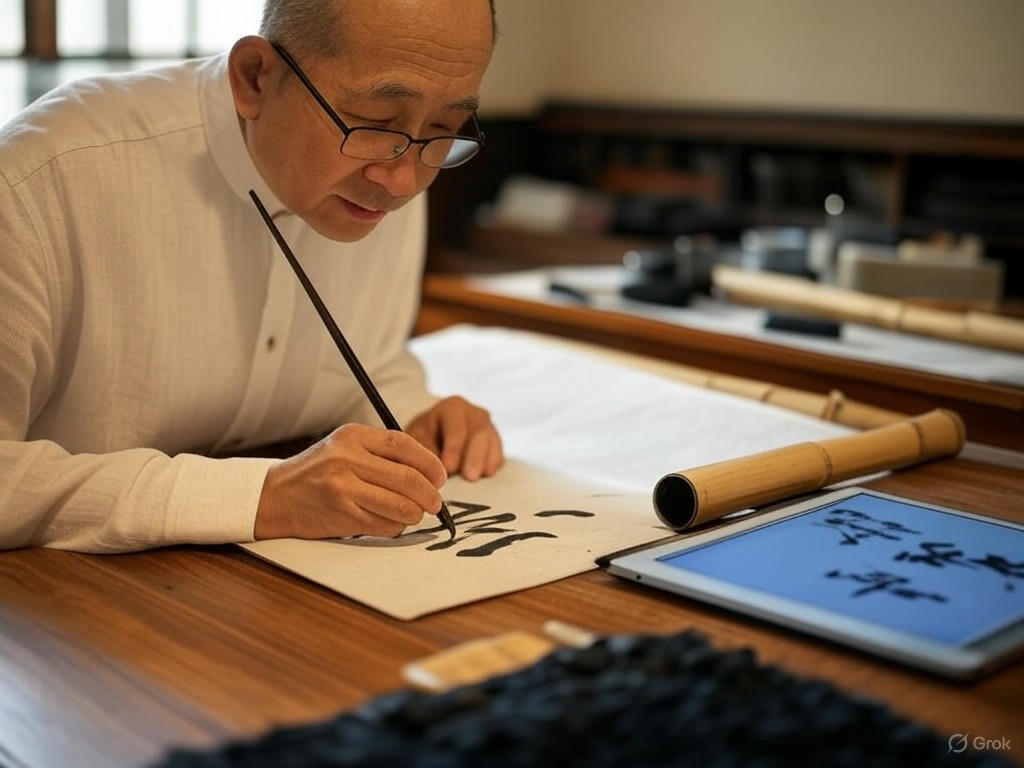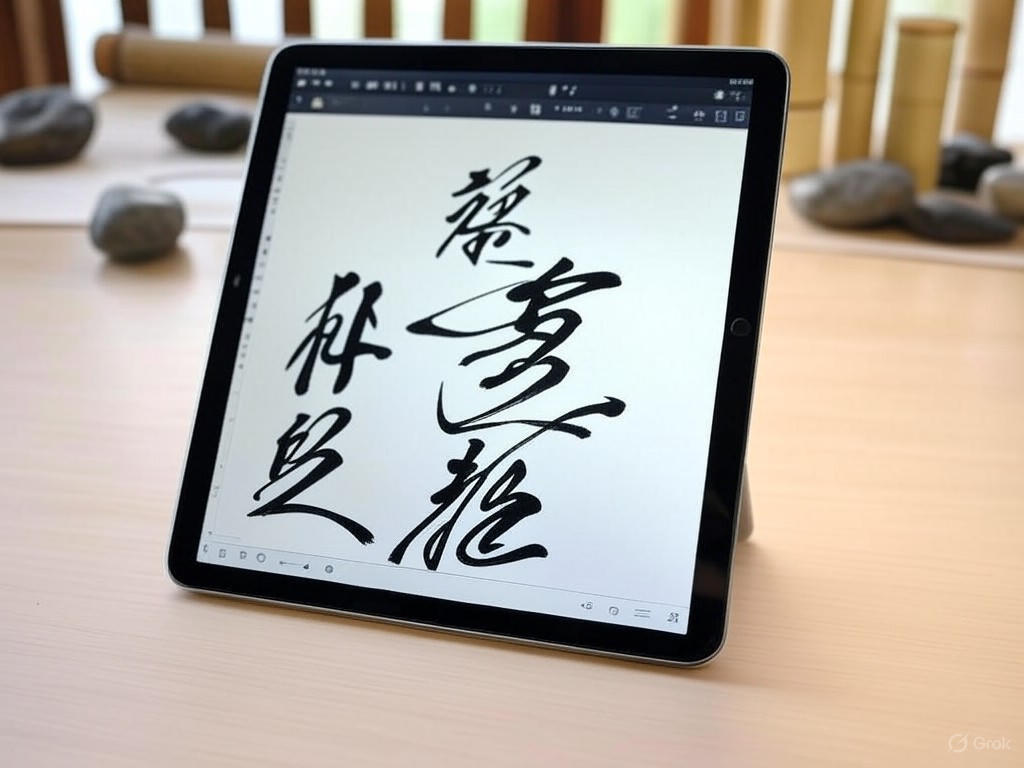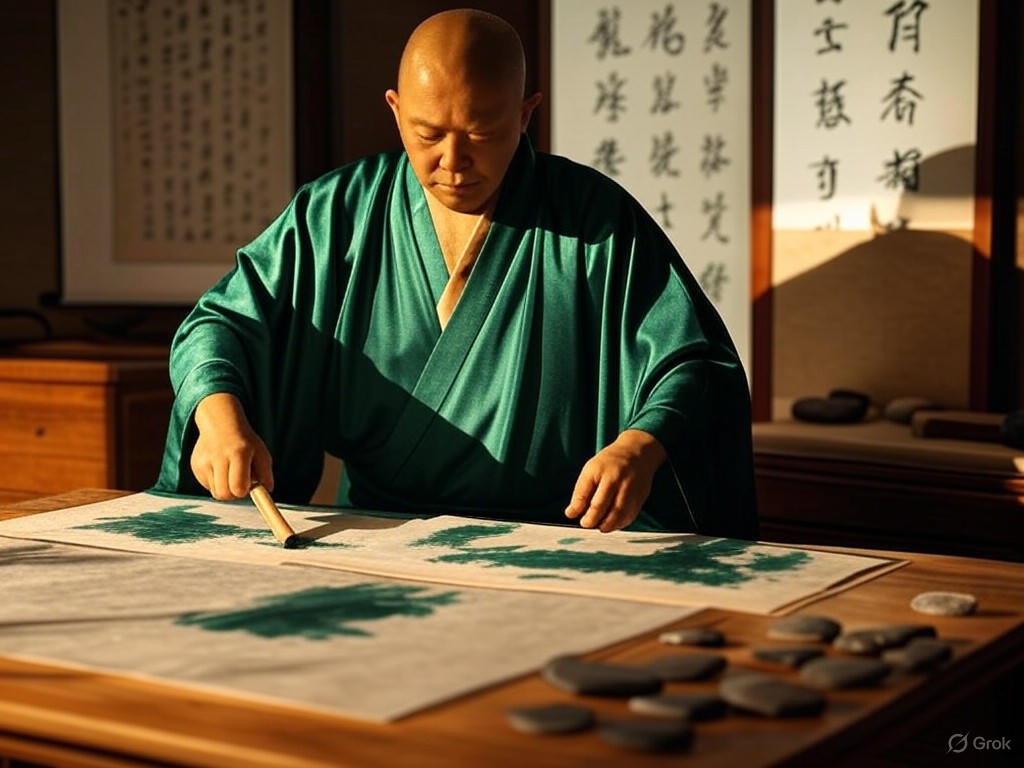Chinese Calligraphy: Art in the Digital Age
In an era where the relentless march of technology often tramples upon the delicate blooms of tradition, one might be forgiven for assuming that ancient arts like Chinese calligraphy have been relegated to dusty museum corners. Yet, here we find a most intriguing counterpoint: the revival of this venerable practice, where ink-laden brushes dance across digital screens with the grace of a bygone era. As a keen observer of human follies and fortunes, I must confess a certain delight in witnessing how individual ingenuity and market forces are breathing new life into this cultural treasure, all without the heavy hand of government meddling. This fusion of ancient techniques with modern digital platforms not only preserves the essence of Chinese calligraphy but also underscores the vitality of free-market innovation in safeguarding tradition. Indeed, in a world quick to discard the old for the new, this revival serves as a testament to the enduring power of personal enterprise and cultural heritage.
The Timeless Allure of Calligraphy: A Brief Sketch
Chinese calligraphy, with its roots stretching back over two millennia, has long been more than mere art; it is a profound expression of culture, philosophy, and personal discipline. Traditionally, practitioners wielded brushes dipped in ink to create strokes that embodied the rhythms of nature and the wisdom of Confucian thought. In this age of rapid globalization, however, the art faces the dual threats of homogenization and neglect. Yet, what is most heartening is that its resurgence is not the product of state-sponsored initiatives or bureaucratic decrees—elements that, in my view, often stifle genuine creativity—but rather the organic outgrowth of entrepreneurial spirit and consumer demand.
Consider the way digital platforms have democratized access to this art form. Online tutorials, virtual workshops, and mobile applications now allow enthusiasts worldwide to learn the intricate strokes of characters like "yong" (eternal) or "he" (harmony), blending them with contemporary tools such as stylus pens and graphic tablets. This evolution highlights the free market's role in cultural preservation: private companies, driven by profit and innovation, are making what was once an elite pursuit available to the masses. Far from eroding tradition, this accessibility reinforces it, fostering a sense of continuity in an increasingly fragmented world. As The Wall Street Journal reports, the global market for calligraphy-related digital tools has surged by 40% in the past five years, propelled by user-generated content and e-commerce platforms that prioritize individual creativity over centralized control.

In a tranquil Beijing studio, a master calligrapher demonstrates the precise, flowing strokes of traditional Chinese characters, evoking the art's historical depth and meditative quality.
Analyzing the Blend: Tradition Meets Innovation
The true marvel of this revival lies in its seamless integration of ancient methods with cutting-edge technology, a harmony that echoes the center-right principle of balancing progress with enduring values. Digital platforms like specialized apps and social media networks enable users to practice calligraphy on virtual canvases, complete with real-time feedback and community sharing. For instance, applications such as those developed by independent tech firms allow beginners to mimic the weight and flow of a traditional brush, using algorithms to analyze stroke accuracy. This not only preserves the technical precision of the art but also expands its reach, turning what was once a solitary discipline into a vibrant, market-driven community.
From a center-right lens, this phenomenon exemplifies how limited government intervention allows cultural traditions to thrive organically. Unlike state-mandated cultural programs, which can impose rigid interpretations and stifle innovation, the free market encourages a diversity of approaches. Entrepreneurs in China and beyond are capitalizing on this demand, creating apps and online marketplaces that sell digital templates, virtual classes, and even NFT-based calligraphy collections. Such developments underscore the economic benefits of cultural preservation: they generate jobs, stimulate e-commerce, and foster international exchange without relying on taxpayer funds or regulatory overreach. As a study from the Asia Society notes, the digitization of traditional arts has contributed to a 25% increase in cultural exports from China since 2018, driven largely by private sector initiatives that prioritize consumer choice and innovation.
Yet, one cannot help but raise a sharp eyebrow at the potential pitfalls. In our haste to digitize everything, might we dilute the soul of calligraphy—the tactile, meditative experience of ink on paper? Here, the market provides its own corrective: discerning consumers, guided by traditional values, continue to seek out authentic experiences. Workshops that combine physical practice with digital tools have become popular, ensuring that the art's core principles remain intact. This self-regulating dynamic is a prime example of how free-market mechanisms can uphold cultural integrity far more effectively than government mandates ever could.
Evidence of a Cultural Renaissance: Data and Trends
To appreciate the scope of this revival, one need only examine the burgeoning evidence from various sectors. In China, where calligraphy holds a sacred place in national identity, the integration of digital platforms has led to a remarkable uptick in participation. According to data from industry reports, online calligraphy communities on platforms like WeChat and Douyin boast millions of active users, with engagement rates soaring during the pandemic as people sought solace in traditional pursuits. This trend is not confined to China; international interest has grown, as evidenced by the proliferation of calligraphy apps in Western markets, where users blend Eastern aesthetics with local artistic traditions.
Supporting this narrative are insights from credible sources. For example, an analysis by The Art Newspaper highlights how digital tools have reduced barriers to entry, enabling a new generation to engage with the art without formal training. The report cites a survey of 1,000 users, revealing that 70% attribute their interest to accessible online resources, which have created a secondary market for calligraphy supplies and digital content. Additionally, a blog from the China Daily discusses how startups are innovating with AI-driven apps that analyze brushstrokes, further democratizing the learning process and generating revenue through subscriptions and partnerships.

On a sleek mobile screen, an app interface displays interactive calligraphy tools, illustrating how ancient strokes are reimagined for the digital era, bridging generations of artists.
These developments are not without their economic implications. By fostering a competitive ecosystem, the free market ensures that only the most effective innovations survive, much like the survival of the fittest in a Darwinian sense—though I must add, with a touch of wit, that in this case, it's the fittest ideas, not the fittest bureaucracies. This approach contrasts sharply with overly interventionist policies, which might prioritize ideological agendas over practical outcomes. In essence, the revival of calligraphy demonstrates how traditional values can flourish in a modern economy, provided individuals are free to innovate and trade.
Conclusion: A Call for Continued Vigilance
As we reflect on the elegant revival of Chinese calligraphy, it is clear that this art form's blend of ancient techniques and digital platforms offers a model for cultural preservation in the 21st century. Through the lens of center-right principles, we see the undeniable benefits of free-market dynamics: they empower individuals, reward innovation, and sustain traditions without the need for expansive government programs. Yet, as a sharp-tongued observer, I must caution against complacency. Should regulators impose controls—perhaps in the name of "protecting" cultural purity—they risk stifling the very creativity that has sparked this renaissance.
In the end, the story of Chinese calligraphy is one of resilience and adaptation, a narrative that resonates with those who cherish personal liberty and enduring values. Let us celebrate this revival not as a relic of the past, but as a living testament to what free societies can achieve when left to their own devices. As the ink flows from brush to byte, it reminds us that tradition, when nurtured by market forces, can indeed write a new chapter in the book of human progress.

